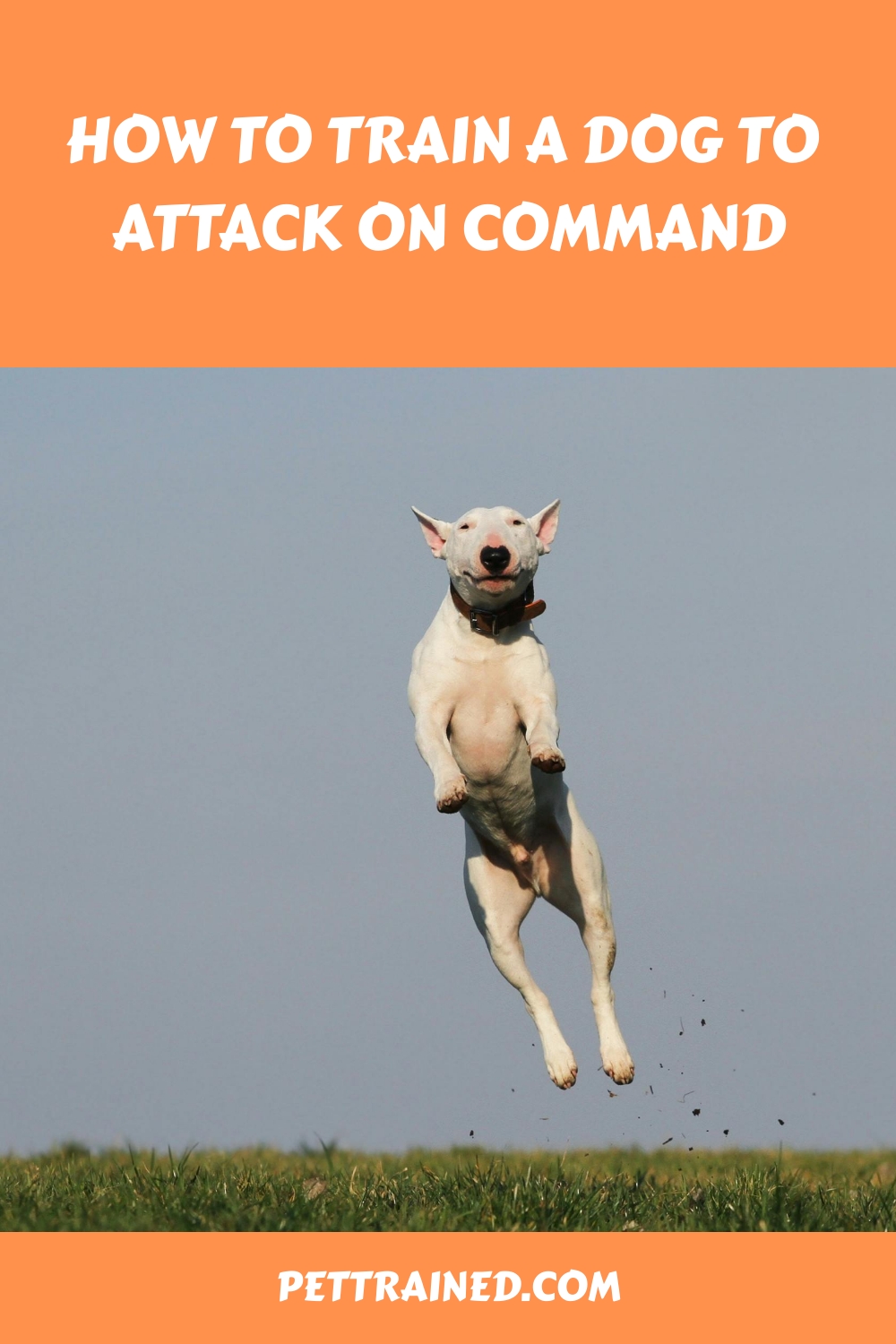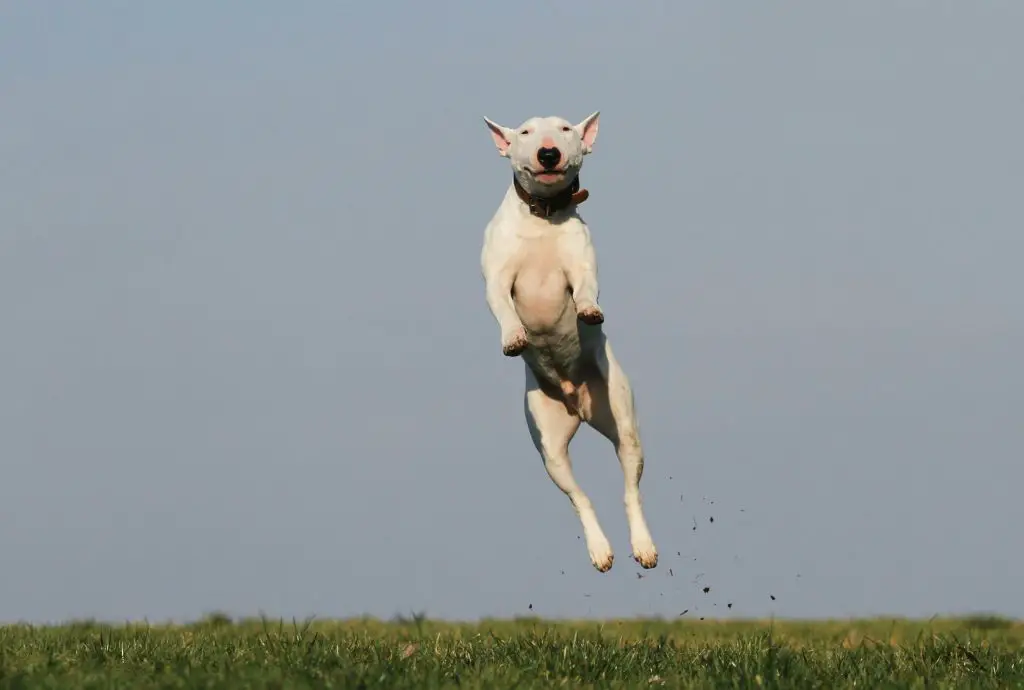
Training a dog to attack on command needs to be done ethically and responsibly. Start by selecting a breed suited for this task, such as a German Shepherd or Belgian Malinois.
Focus on solid basic obedience training using positive reinforcement. Build a strong bond through trust and consistency.
Then, introduce advanced commands and controlled aggression drills gradually. Safety is paramount—use proper equipment and professional guidance to minimize risks.
Regularly assess your dog’s progress to guarantee they respond reliably and aren’t experiencing undue stress.
Stay committed and maintain high ethical standards to train effectively and responsibly.
For detailed guidance, explore further.
This post contains affiliate links. However all the information provided on this site are my own honest opinions. See more in Disclaimer.
Table of Contents
Key Takeaways

- Start with basic obedience training to ensure the dog reliably follows commands.
- Select a suitable breed known for controlled aggression and reliability, such as German Shepherds or Belgian Malinois.
- Use positive reinforcement techniques throughout the training process to encourage desired behaviors.
- Incorporate controlled aggression drills gradually, ensuring the dog responds appropriately and safely.
- Regularly assess the dog’s progress and adjust the training program to address any emerging aggression triggers.
Ethical Considerations
When considering training a dog to attack on command, it’s essential to weigh the ethical implications and potential consequences for both the animal and the people involved.
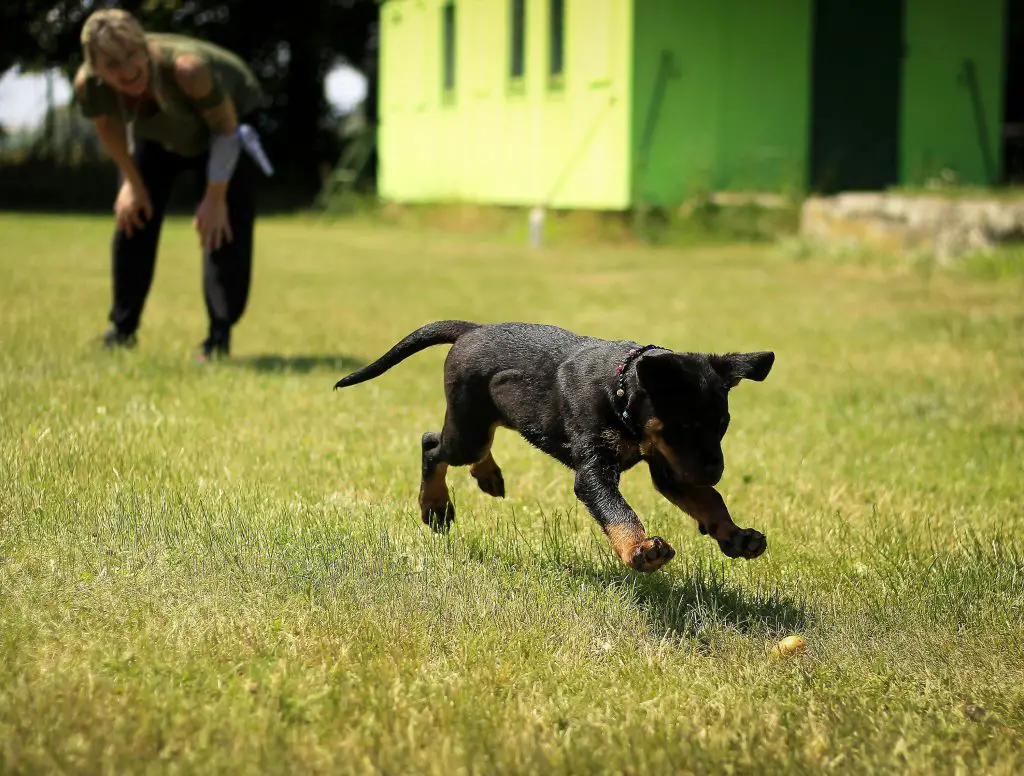
You need to guarantee that ethical training techniques are employed to avoid causing harm or distress to the dog.
Training a dog to attack isn’t just about teaching commands; it’s about understanding the moral responsibility you hold in shaping the dog’s behavior.
Using ethical training techniques involves positive reinforcement and a clear understanding of the breed suitability for such tasks.
Some breeds may naturally excel in protective roles, while others may not be temperamentally suited.
You must consider whether the breed you’ve chosen can handle the behavioral consequences of aggression training without becoming a danger to others.
Your moral responsibility extends beyond the training sessions. You have to ensure the dog understands when and where it’s appropriate to act on command.
A poorly trained attack dog can pose significant risks, leading to potential harm and legal issues.
Always remember, the behavioral consequences of your training will reflect on both you and your dog, so it’s crucial to proceed with caution and integrity.
Choosing the Right Dog
Selecting the right dog for attack training involves evaluating the breed’s temperament, physical capabilities, and suitability for the task.
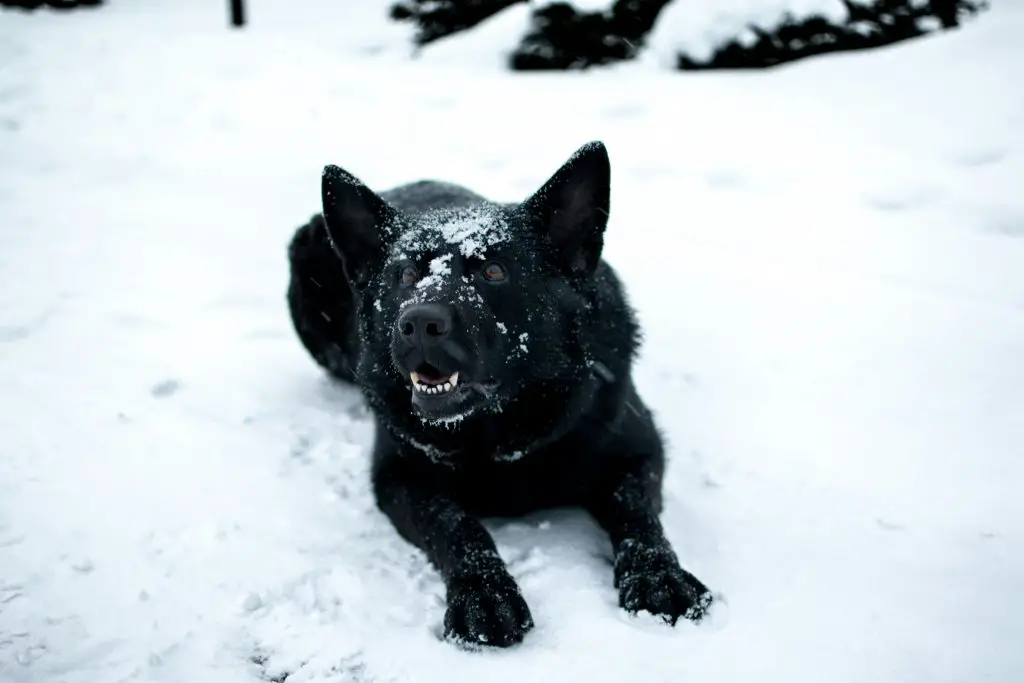
You should start with breed selection, as certain breeds like German Shepherds, Belgian Malinois, and Rottweilers are naturally inclined towards protective behaviors.
These breeds often exhibit the strength, agility, and intelligence needed for effective training. Temperament evaluation is essential.
You need a dog that’s confident, stable, and responsive to commands. Avoid dogs that show signs of excessive aggression or fear, as these traits can be counterproductive.
A dog with a balanced temperament is more likely to respond positively to training methods and is easier to manage.
Aggression management is another key aspect. Proper training methods should focus on controlled aggression, making sure the dog can distinguish between a genuine threat and a non-threatening situation.
This prevents unnecessary harm and guarantees the dog remains a reliable companion.
Basic Obedience Training
Before you can train your dog to attack on command, starting with basic obedience training is crucial.

Begin with teaching the sit and stay commands, which are foundational for any advanced training.
Additionally, make sure your dog is comfortable walking on a leash to guarantee control and safety during training sessions.
Sit and Stay Commands
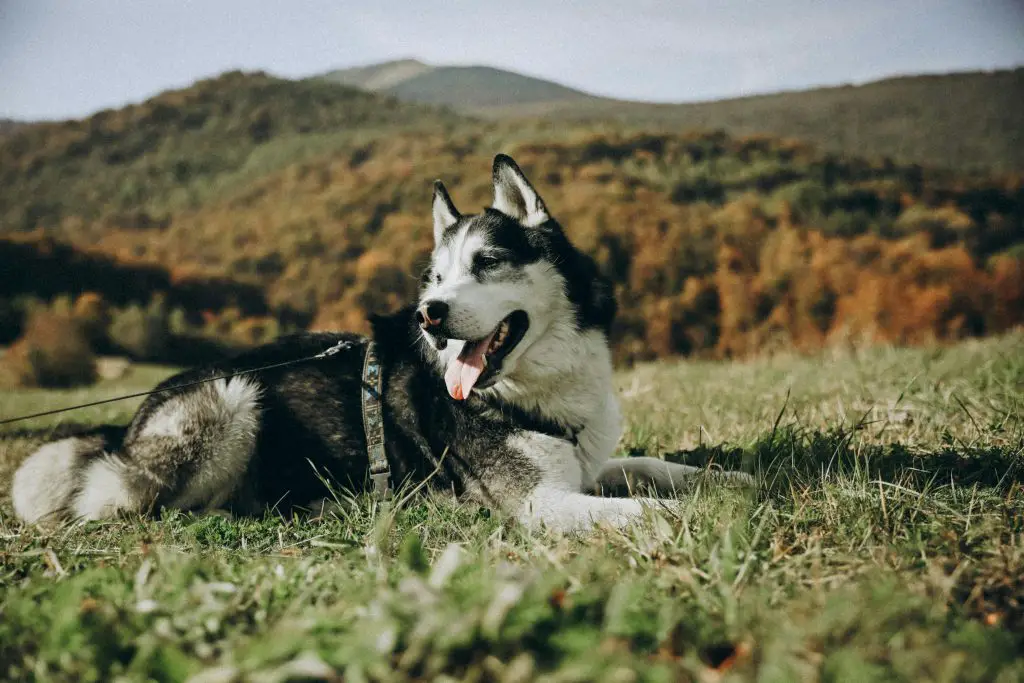
Mastering the sit and stay commands forms the foundation of basic obedience training for your dog. These commands are essential for establishing control and setting the stage for more advanced training, including attack commands.
Start by using treat rewards and positive reinforcement to encourage your dog.
Consistently reward your dog when they perform the desired action. Pay close attention to your body language, as dogs often rely on visual cues.
To teach the sit command:
- Hold a treat close to your dog’s nose.
- Move your hand up, allowing their head to follow the treat and their bottom to lower.
Once they’re in a sitting position, say ‘Sit’ and give the treat.
For the stay command:
- Begin with your dog in the sitting position.
- Open your palm in front of them and say ‘Stay.’
Take a few steps back. If they stay, reward them with a treat and praise.
Leash Training Basics
Leash training is essential for ensuring your dog walks safely and follows commands while on a leash. Start by introducing your dog to the leash in a calm environment.
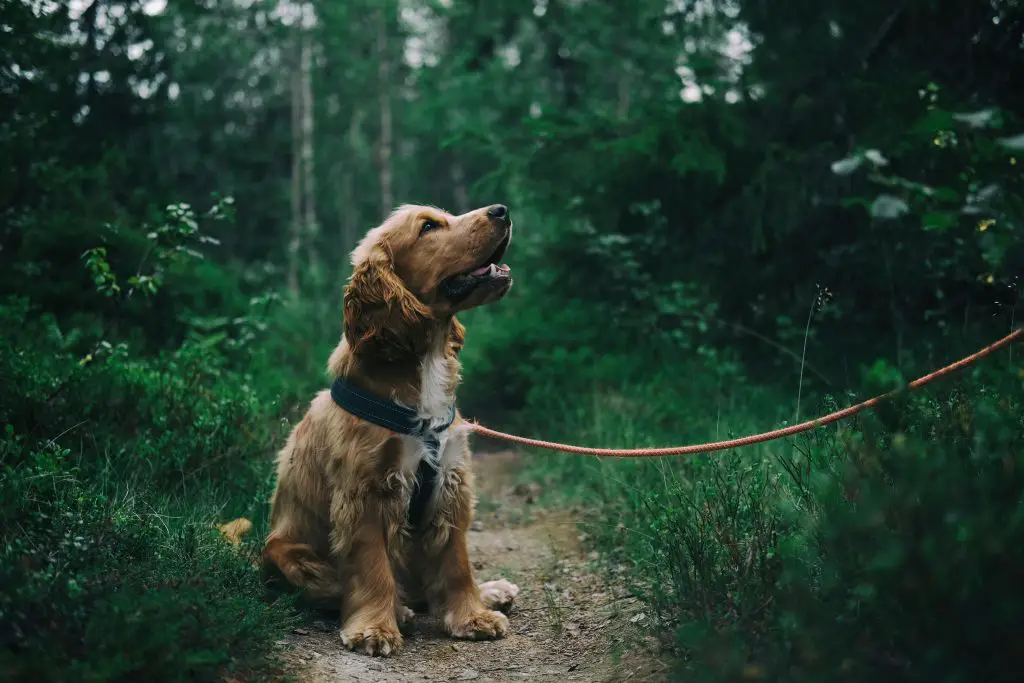
Let them sniff and get used to it before attaching it to their collar. Once they’re comfortable, practice walking in short, controlled sessions.
Trending in Dogs:
Focus on teaching your dog to walk beside you without pulling. Use treats and positive reinforcement to encourage good behavior.
When your dog pulls, stop walking and wait until they return to your side before continuing. This helps them understand that pulling won’t get them where they want to go faster.
Incorporate recall training during leash sessions. Practice calling your dog back to you and rewarding them when they respond promptly. This reinforces your dog’s ability to follow commands, even when distracted.
Additionally, work on bite inhibition while on the leash. If your dog starts mouthing or biting the leash, redirect their attention with a toy or treat.
Consistently discouraging this behavior will teach them that biting the leash is unacceptable.
Building Trust and Bond
Establishing a strong foundation of trust and mutual respect is crucial for training a dog, especially for advanced tasks like attack training.
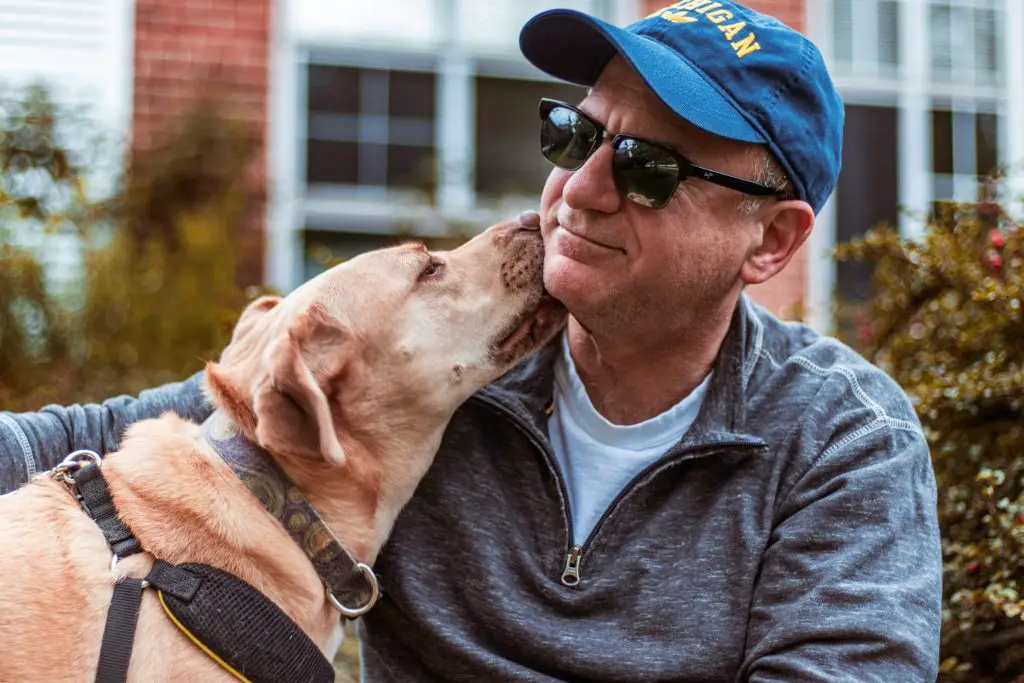
This bond ensures your dog feels secure and confident, essential for successful training.
Positive reinforcement, such as treats, praise, or playtime, is key in making training enjoyable and strengthening your relationship.
Consistency and patience are vital. Dogs thrive on routine and clear expectations, so ensure your commands, rewards, and training sessions are consistent.
This helps your dog understand what’s expected and builds their confidence.
To build trust and bond with your dog, spend quality time together engaging in activities they enjoy, like walks or play sessions. Also read on How To Train A Dog To Run With You.
Handle your dog gently to nurture a sense of security and use clear, consistent commands to avoid confusion.
Positive reinforcement for good behavior promotes repetition, and maintaining a regular training schedule provides routine and structure.
Advanced Commands
Teaching advanced commands to your dog requires a solid understanding of basic obedience and a well-established bond.

To move forward with attack training techniques, you should guarantee your dog responds reliably to commands like ‘sit,’ ‘stay,’ and ‘heel.’
Consistency is vital—use the same words and gestures every time to avoid confusion. Start with controlled aggression drills.
Introduce your dog to a padded bite sleeve and incrementally teach them to bite and release on command.
Use advanced tactics like targeting specific areas, such as the arm or leg, to refine their precision.
Implement reinforcement strategies, rewarding correct actions with praise or treats, and correcting inappropriate responses immediately. Command consistency is key.
Always use the same command for each action, like ‘attack’ for engaging and ‘release’ for letting go.
Reinforce these commands through regular practice sessions, guaranteeing your dog understands and responds promptly. See also How to Train a Dog With a Whistle.
Professional Guidance

When training a dog to attack on command, seeking professional guidance is vital. Certified trainers offer invaluable expertise and guarantee that safety protocols are strictly followed.
Without such guidance, you risk improper training and potential harm to both the dog and others.
Certified Trainer Benefits
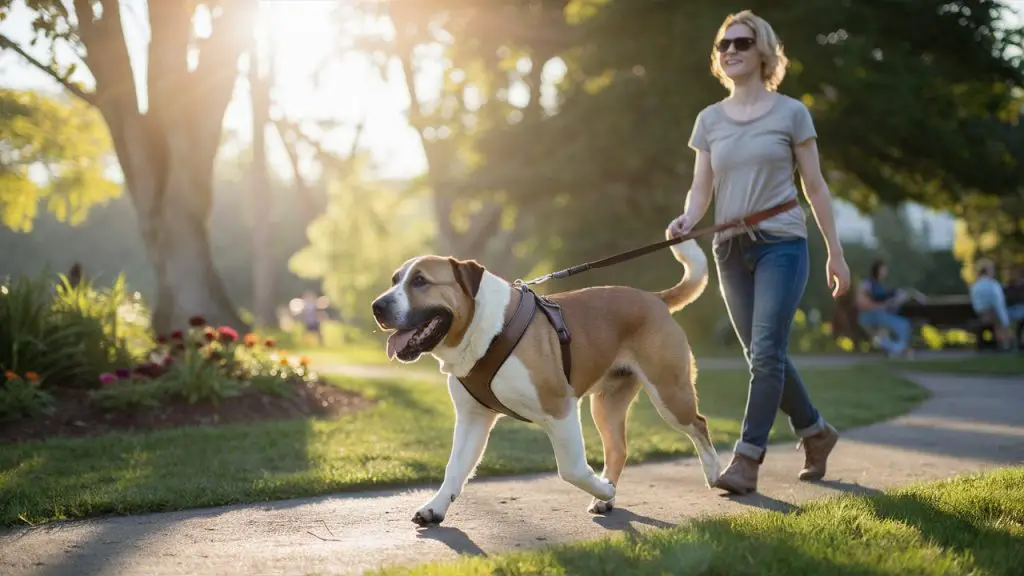
A certified trainer provides the expertise and ethical guidance necessary to guarantee your dog learns to attack on command safely and effectively.
Enlisting a certified professional ensures that your dog’s training is rooted in principles of behavior modification and aggression training, which are essential for developing a controlled and reliable response.
Certified trainers have specialized knowledge and experience in working with dogs, making them uniquely qualified to handle the nuances of protection training.
Here are some benefits of working with a certified trainer:
- Expertise in Behavior Modification: They utilize proven techniques to make sure your dog’s aggression training is both effective and humane.
- Safety Protocols: Certified trainers are well-versed in maintaining a safe environment for both the dog and the handler.
- Customized Training Plans: They tailor the training program to meet your dog’s specific needs and temperament.
- Ethical Standards: Certified trainers adhere to ethical guidelines, ensuring that your dog’s well-being is always a priority.
- Experience with Working Dogs: They’ve extensive experience in training working dogs, giving them the insight needed for effective protection training.
Safety Protocols Importance
Maintaining safety protocols is crucial when training a dog to attack on command.
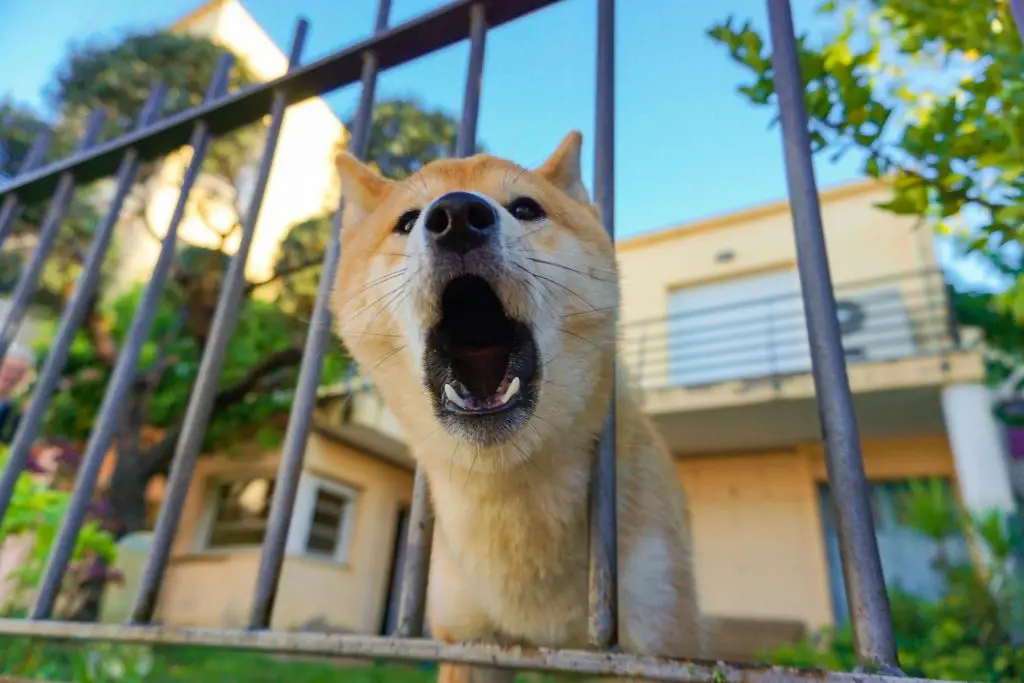
Professional guidance is essential to understand handler responsibility and mitigate potential risks. Proper equipment like bite suits and muzzles is necessary for safety.
Training should always occur in a controlled environment to minimize distractions and hazards. Start with basic commands and gradually progress to more complex tasks.
This ensures your dog isn’t overwhelmed and can handle each challenge confidently.
Professional trainers offer invaluable insights and techniques to ensure strict safety protocols.
They guide you through using equipment correctly and maintaining control. Without their guidance, critical errors could lead to injuries or behavioral issues.
Prioritize safety and seek professional help for a successful training experience.
Safety Protocols
Before starting the training to teach your dog to attack on command, it’s crucial to ensure strict safety measures are in place to protect all individuals involved.

Handling aggression responsibly isn’t only vital for your dog’s welfare but also for avoiding potential legal ramifications.
Implementing proper safety protocols is fundamental to ensuring that your training sessions are both effective and ethical.
It is highly recommended to enlist the expertise of a professional trainer with experience in managing aggression.
They can offer valuable guidance and ensure that the training is carried out safely. Additionally, it’s essential to invest in top-quality protective gear for both yourself and your dog, such as padded suits, gloves, and bite sleeves.
Key safety measures to prioritize include:
- Secure Training Area: Create a safe and enclosed space for training, free from distractions.
- Health Monitoring: Regularly check your dog’s health status to prevent training sessions when they’re unwell.
- Clear Commands: Use consistent and clear verbal cues to prevent any confusion during training.
- Supervision: Always have another individual present during training sessions to provide assistance if necessary.
- Legal Understanding: Familiarize yourself with local laws concerning training dogs for protection to avoid any legal complications.
Regular Assessment
Regular evaluation is important for monitoring your dog’s progress and guaranteeing the training remains effective and safe.
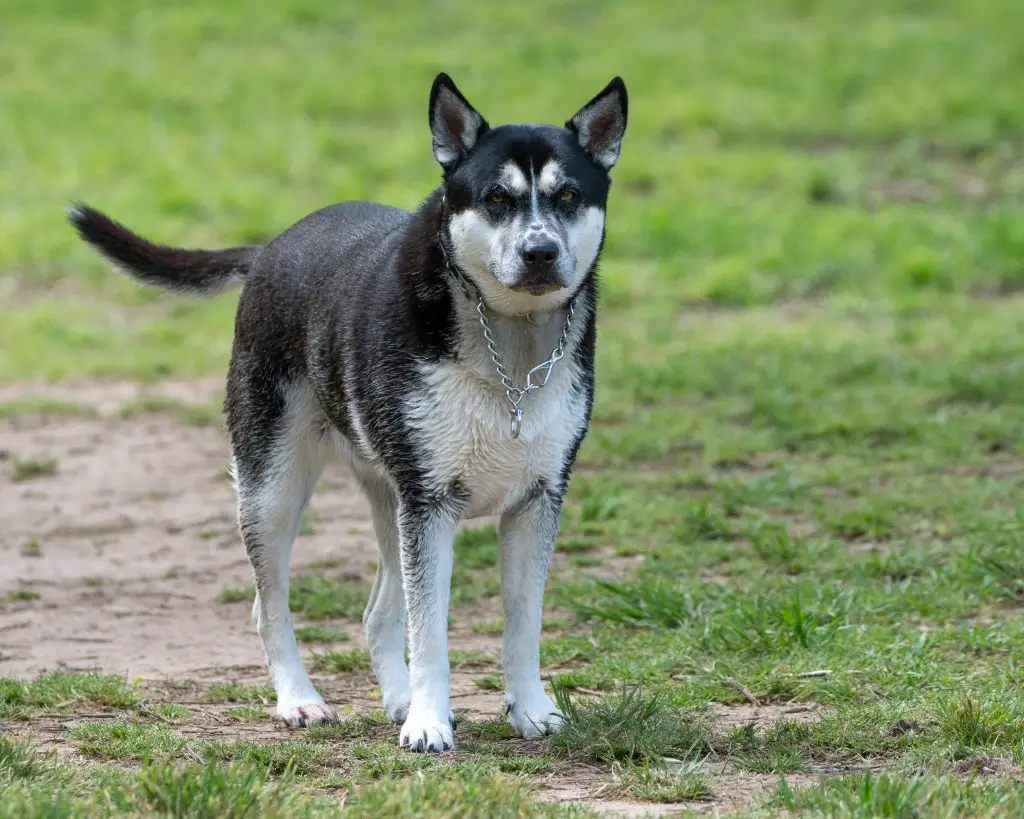
Keeping an eye on behavior modification helps you identify any aggression triggers that may arise.
It’s vital to recognize these triggers early so you can adjust the training program accordingly.
Regular evaluation sessions allow you to observe your dog’s reactions and verify they’re responding correctly to commands.
Incorporate a positive reinforcement approach to maintain your dog’s motivation and compliance.
Use a reward system that includes treats, praise, or playtime to reinforce desirable behaviors.
Regularly assess whether the rewards are still effective or if adjustments need to be made to keep your dog engaged.
During these evaluations, pay close attention to any signs of undue stress or anxiety in your dog.
Training should never compromise your dog’s well-being. If you notice any negative changes in behavior, reassess the training methods and consider consulting a professional trainer for guidance.
Frequently Asked Questions

It usually takes several months, depending on your training techniques and time commitment. Consistent behavioral cues and reinforcement methods are essential.
Your dedication to proper training will determine how quickly your dog learns to follow commands.
‘Different strokes for different folks,’ they say. The best breeds for attack training vary due to differences in aggression levels.
Training techniques should consider breed-specific traits. Understanding these traits guarantees ethical, effective, and clear training methods.
You should start puppy training for aggression development around six months. Guarantee your dog has strong obedience training first.
Conduct a readiness assessment to confirm they’re prepared for advanced skills without compromising their temperament.
Yes, a family pet can undergo protection training to learn attack commands. However, you must consider ethical considerations and potential risks.
Guarantee the training is humane and prioritizes safety for both the dog and your family.
Guarantee your dog only attacks when commanded by setting boundaries and using consistent reinforcement.
Always prioritize safety precautions and seek professional guidance to train responsibly and ethically.
Your vigilance is essential for everyone’s safety.
Conclusion
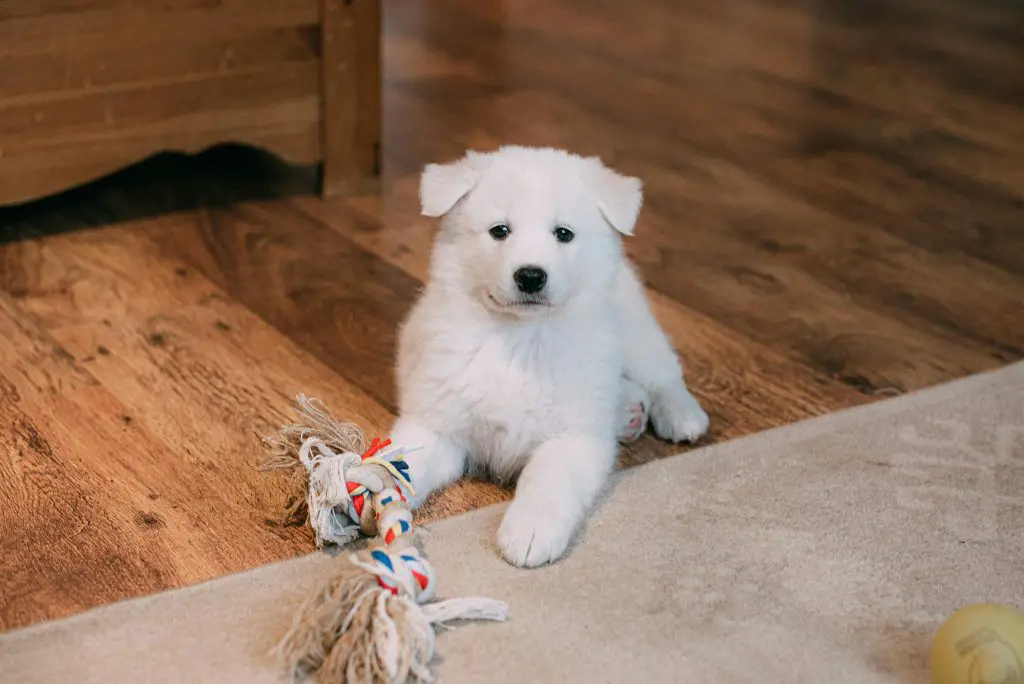
Training a dog to attack on command isn’t something to take lightly. Always prioritize safety and ethics.
For example, imagine you’re training a German Shepherd named Max. With professional guidance, Max learns to protect your home without becoming a danger to others.
This balance guarantees Max is both a loving pet and a reliable guardian. Regular assessments keep his skills sharp and his behavior in check.
Remember, a well-trained dog is a responsible owner’s best asset.
